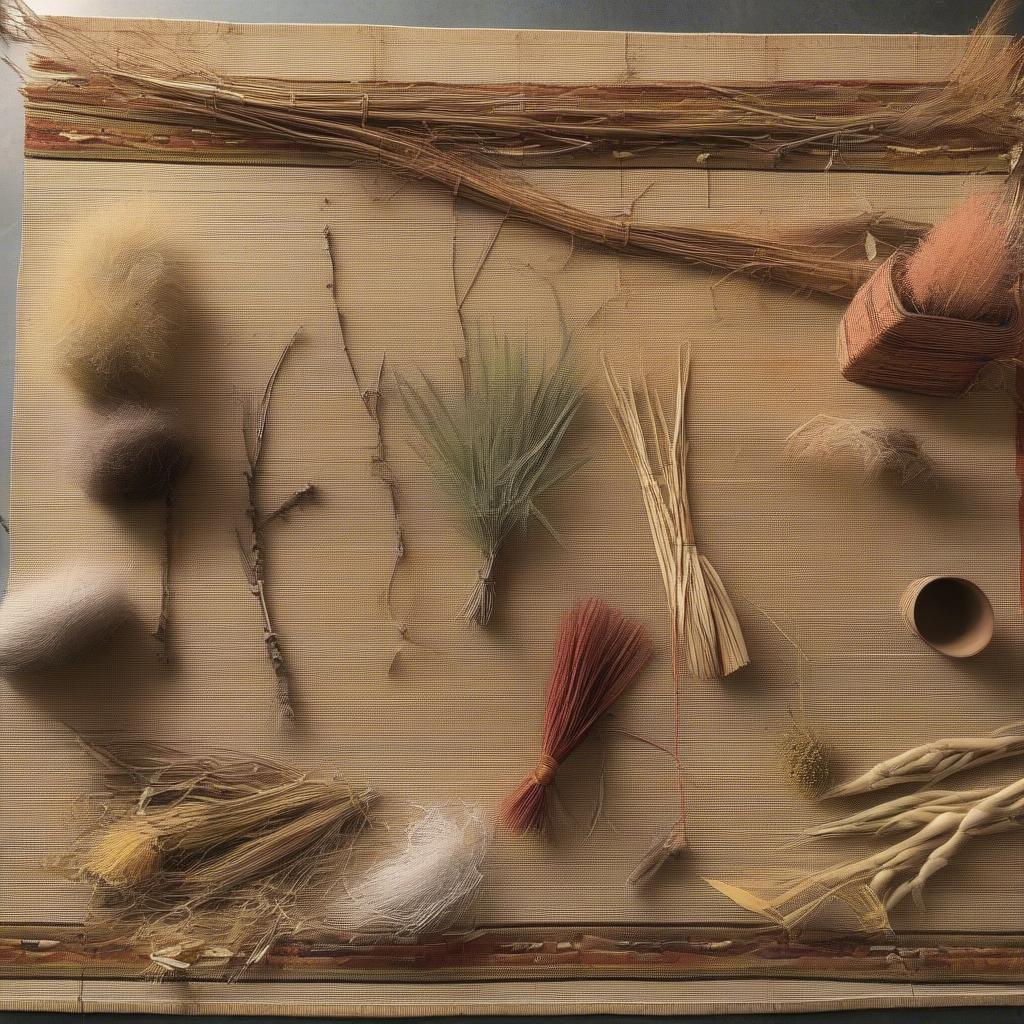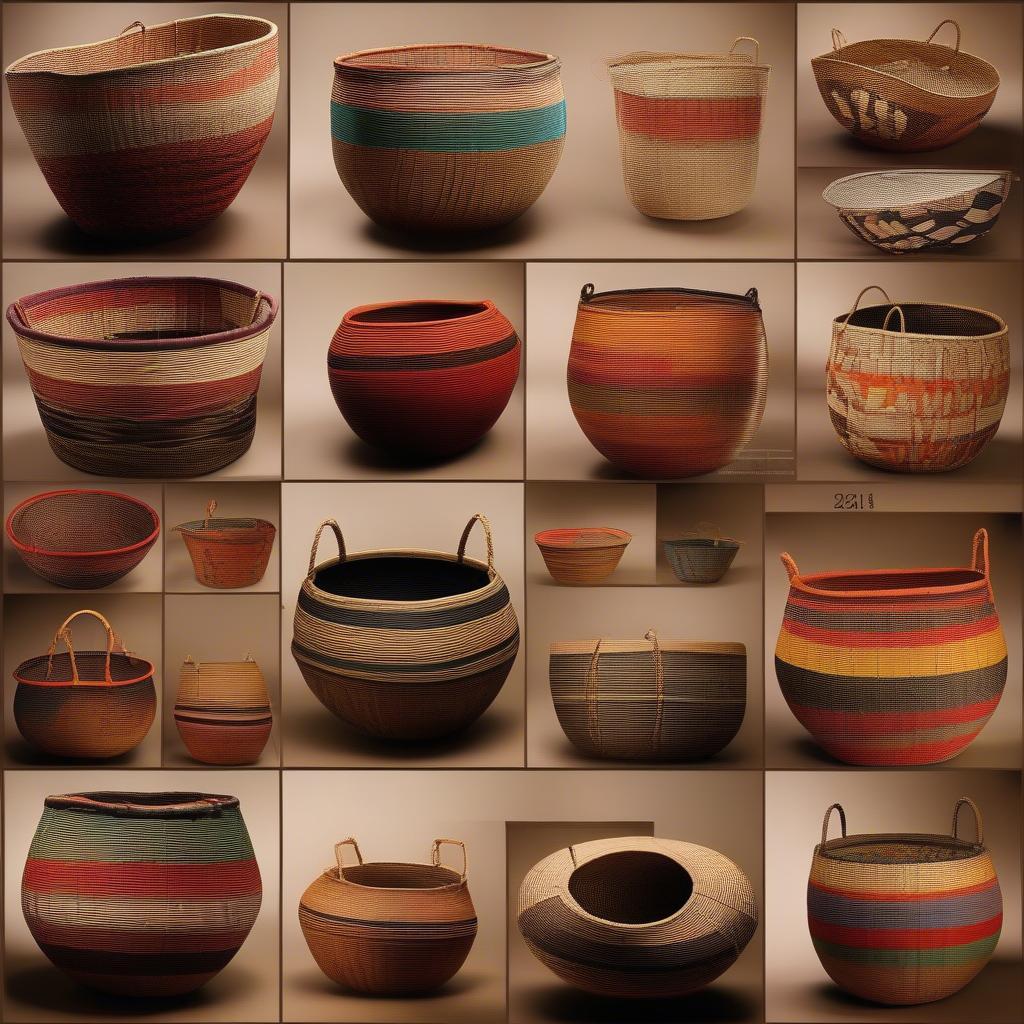Basket Weaving
Hopsewa Basket Weaving: A Timeless Tradition
Hopsewa Basket Weaving is a unique and intricate art form practiced by the Hopi people of Northeastern Arizona. This centuries-old tradition utilizes locally sourced materials and distinctive techniques to create beautiful and functional baskets that reflect the rich cultural heritage of the Hopi tribe. These baskets are not just utilitarian objects; they are considered works of art, embodying stories and traditions passed down through generations.
Exploring the Art of Hopsewa Basket Weaving
Hopsewa basket weaving is more than just a craft; it’s a living testament to the Hopi people’s deep connection with their land and history. The term “Hopsewa” itself refers to a specific type of coiled basket weaving, distinguished by its intricate designs and the use of natural dyes derived from plants and minerals. These baskets serve various purposes, from ceremonial objects to everyday household items. The artistry lies not only in the technical skill required to create them but also in the symbolic meaning woven into each design.
Materials and Techniques of Hopsewa Baskets
The materials used in Hopsewa basket weaving are primarily sourced from the surrounding environment, demonstrating the Hopi people’s sustainable practices and respect for nature. The foundation of these baskets is often coiled yucca leaves or sumac, carefully prepared and split into thin, flexible strands. For the weaving elements, rabbitbrush or willow twigs are commonly used, providing strength and durability.
 Hopsewa basket weaving materials: Yucca leaves, sumac, rabbitbrush, and willow twigs.
Hopsewa basket weaving materials: Yucca leaves, sumac, rabbitbrush, and willow twigs.
The process of creating a Hopsewa basket is meticulous and time-consuming. Each coil is carefully sewn to the previous one using a strong, thin awl, and the intricate designs are incorporated using dyed materials. The dyes, traditionally created from plants like wild spinach and ochre, produce rich, earthy tones that enhance the natural beauty of the baskets.
The Symbolism and Cultural Significance of Hopsewa Baskets
Hopi basket designs are not merely decorative; they carry deep cultural and spiritual significance. Geometric patterns, stylized depictions of animals, and celestial motifs often adorn these baskets, representing various aspects of Hopi cosmology and their connection to the natural world. For example, the butterfly symbolizes transformation and renewal, while the corn stalk represents life and sustenance.
“Hopsewa baskets are not simply objects; they are vessels of stories, connecting past generations to the present.” – Aiyana Humetewa, Hopi basket weaver.
Preserving the Tradition of Hopsewa Basket Weaving
In recent years, efforts to preserve and revitalize the tradition of Hopsewa basket weaving have gained momentum. Workshops and apprenticeships are offered to younger generations, ensuring that this ancient art form continues to thrive. This renewed interest not only helps maintain cultural heritage but also provides economic opportunities for Hopi artisans.
Hopsewa Basket Weaving in the Modern World
While rooted in tradition, Hopsewa basket weaving also finds its place in the modern world. Contemporary Hopi artists are exploring new designs and incorporating innovative techniques while still adhering to the core principles of their ancestors. This evolution ensures that Hopsewa basket weaving remains a vibrant and relevant art form.
 Contemporary Hopsewa basket weaving: Modern interpretations of traditional designs.
Contemporary Hopsewa basket weaving: Modern interpretations of traditional designs.
“The beauty of Hopsewa basket weaving lies in its ability to adapt and evolve while staying true to its cultural essence.” – Emerson Sekayquaptewa, Hopi cultural preservationist.
Hopsewa basket weaving is a testament to the enduring spirit of the Hopi people. From its practical uses to its profound cultural significance, Hopsewa basket weaving continues to inspire and captivate. By understanding the history, techniques, and symbolism behind this unique art form, we gain a deeper appreciation for the rich cultural heritage it represents.
FAQ
- What is the difference between Hopsewa and other types of basket weaving?
- Where can I purchase authentic Hopsewa baskets?
- How long does it take to create a Hopsewa basket?
- What are the most common designs found in Hopsewa baskets?
- Are there any resources available to learn Hopsewa basket weaving?
For support, please contact our Hotline: +84 388 951 999, address: Hanoi, Vietnam or Tech Avenue, Suite 12, San Francisco, CA 94105, USA. We have a 24/7 customer service team.
